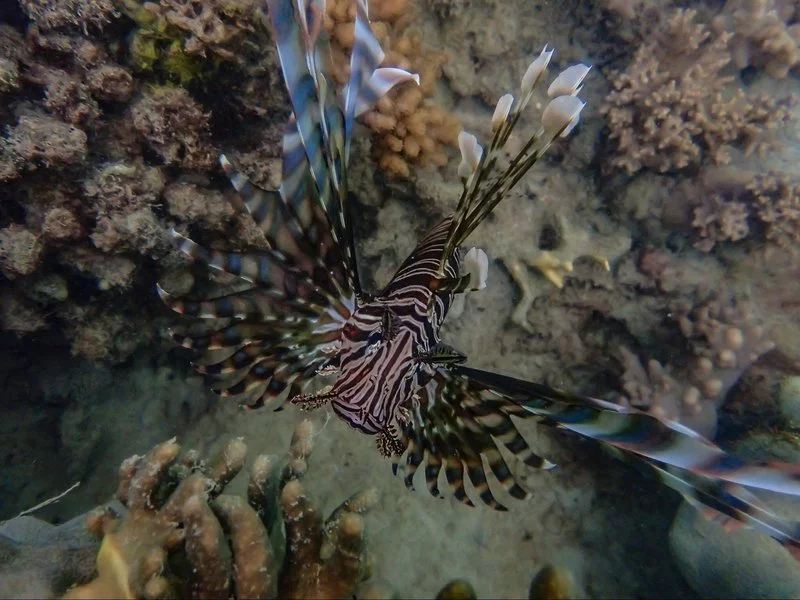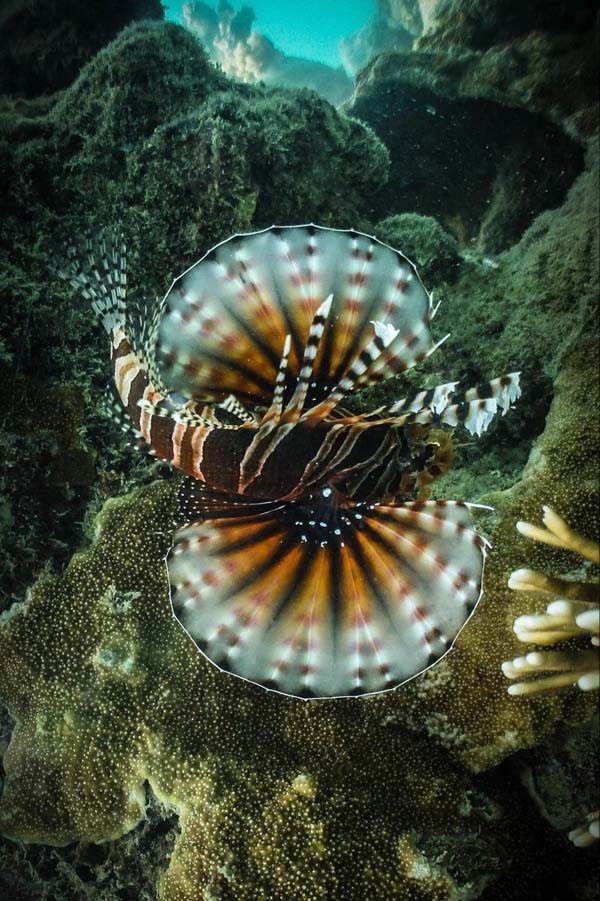The lion fish goes by many names including zebrafish, turkey fish, and firefish. These guys belong to the genus Pterois in the family Scorpaenidae. The fish in this family all have one main feature in common, they are venomous, some of the most venomous animals in the ocean in fact. The sting from these fish comes in the form of venomous spines. The venom of a lion fish can cause symptoms such as extreme pain, nausea, fever, and vomiting among others. While none of that sounds all that pleasant it is rare that a sting from a lion fish will be fatal in a healthy adult. However the venom can have a more severe effect on young children, the elderly, and those with poor health or a weakened immune system and has been known to cause deaths in these groups. These spines are only used as a defence mechanism, a lion fish will not attack and sting a human unless they have been harassed and touched. Despite their venomous spines lionfish are edible when prepared correctly. Their flesh has been described as white, tender and melt in your mouth delicious.
There are currently 12 species of lionfish recognised in the world. They are native in the Indo-Pacific region however they have now also become established as an invasive species on the east coast of the United States and in the waters of the Caribbean and Mediterranean. They can be found living in a variety of different habitats including coral reefs, lagoons, and rocky reefs and even in harbours. Shallow waters are where they are more commonly located however they do have the ability to withstand greater depths and are also spotted down at depths of over 100 meters.

Lionfish are stunning animals, each of the 12 species all vary in appearance slightly. However they do all have alternating reddish/brown and white vertical stripes running down the length of their body and beautiful fan-like pectoral fins which also have the reddish/brown stripe patterning. Their dorsal fins are also quite striking with long dorsal spines. There is a common misconception that lionfish are small fish however once mature most species will grow to lengths of between 30-40 centimetres. They are quite fast growing and will reach sexual maturity at around 1 year old. Once they have reached this stage they have the ability to breed all year round if conditions are warm enough. They are prolific breeders and a single female lion fish can produce 15 to 30 thousand eggs per cycle and she can do this every 3 to 4 days, that’s approximately 2 million eggs a year per female if the conditions are right. These extremely high reproductive rates and large egg batches have led to them being one of the most aggressively invasive species on the planet.

Not only are they prolific breeders, they are voracious predators. They will feed on large amounts of pretty much any animal that is unlucky enough to fit inside their largemouth. This includes small fish, molluscs and a range of other invertebrates. The reason that lionfish are able to feed on such large amounts of animals is that they are very skilled hunters. They have very fine and steady control over their buoyancy and therefore their position in the water column. Once it has located its prey and is in position the lion fish will then spread its large pectoral fins and blow water from their mouth which is thought to distort their shape and confuse prey. Once close enough the lion fish will strike with lightning fast speed and swallow their prey whole. These guys also do not have many natural predators aside from them eating smaller members of the lionfish family. In areas where lionfish have become an introduced pest their feeding habits and lack of predators has made them extremely destructive to the ecosystems.
Here in Australia lionfish are native. They are a natural part of the marine ecosystems here and have not caused the damage here that they have in other parts of the world. This means that we are lucky enough to be able to enjoy sightings of these stunning fish on our reefs without having to remove them from the environment for being a pest species. The Whitsundays with its warm tropical waters and numerous protected shallow reefs is the perfect environment for lionfish and they can be spotted on snorkels around the island. However their patterning and fan-like fins can make them hard to spot against the coral so you will have to keep a good eye out to spot them.



